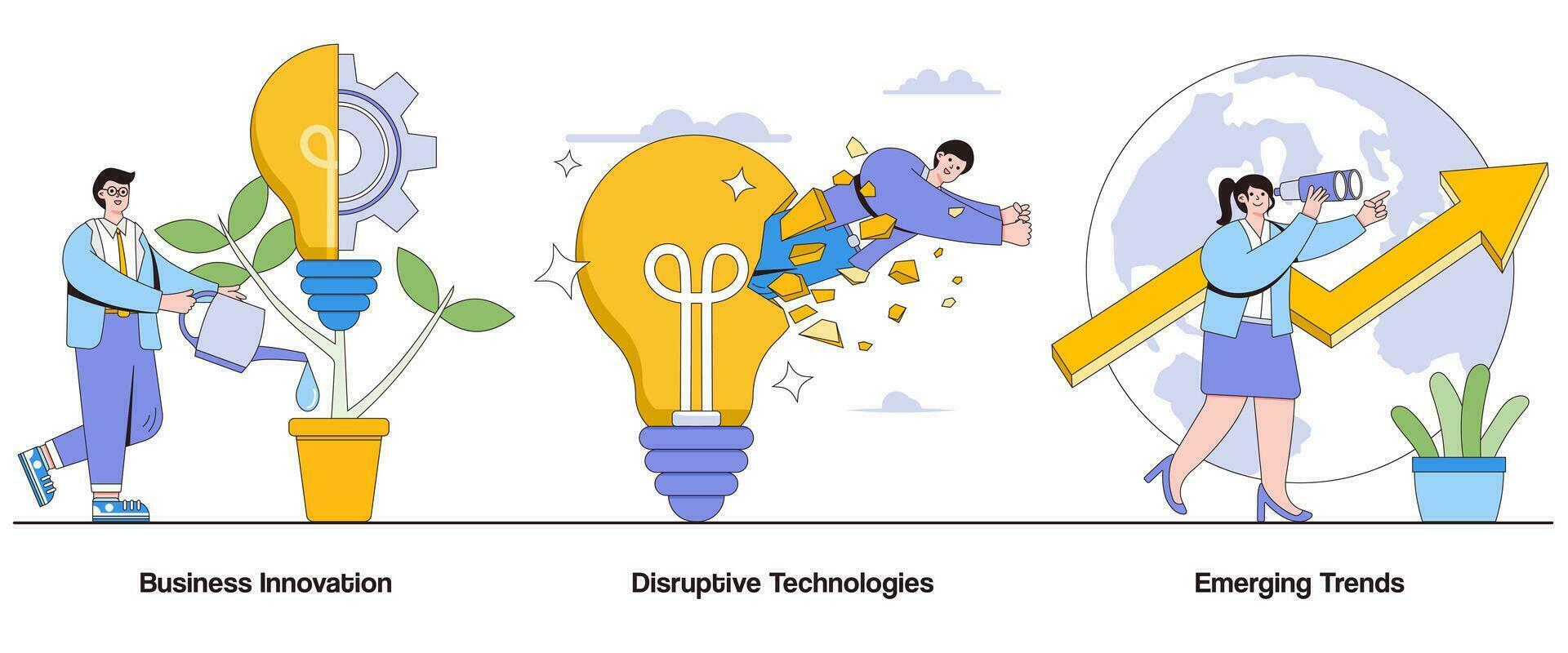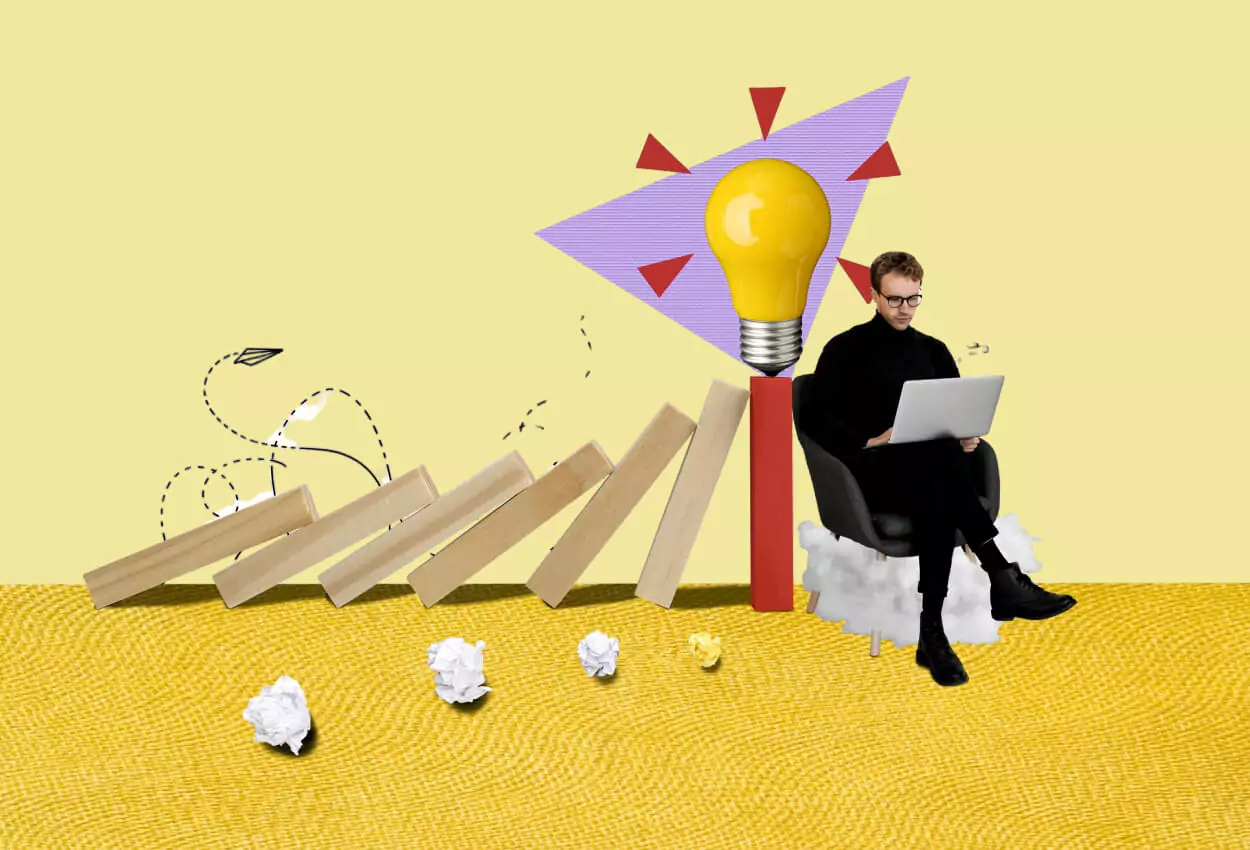How Disruptive Innovation Fundamentally Reshapes Markets

In the grand theater of global commerce, a silent war is constantly being waged. It’s not a conflict fought with weapons, but with ideas, technology, and unprecedented business models. On one side stand the industry titans—the established, efficient, and profit-rich incumbents. On the other are the agile, ambitious, and often underestimated newcomers. The weapon that consistently tips the scales in this conflict is Disruptive Innovation. This is not merely a buzzword; it is a powerful, predictable, and profound force that doesn’t just improve products—it fundamentally rewrites the rules of entire industries, reshapes consumer behavior, and redraws the map of our economic future. Understanding this force is no longer a strategic advantage; it is a prerequisite for survival in the 21st-century marketplace.
A. Deconstructing Disruptive Innovation: Beyond the Hype
The term “disruptive innovation” was coined by the late Harvard Business School professor Clayton Christensen, and it is often misused to describe any breakthrough. To truly grasp its power, we must distinguish it from other types of innovation.
A. What Disruptive Innovation Is (and What It Isn’t)
-
Disruptive Innovation: This specific phenomenon describes a process by which a smaller company with fewer resources successfully challenges established incumbent businesses. The disruptor typically starts by targeting overlooked market segments with a simpler, more convenient, or more affordable alternative. Initially, this product or service is often inferior in the eyes of the mainstream market. However, it improves relentlessly, eventually meeting the needs of the mainstream and ultimately displacing the industry leaders.
-
Sustaining Innovation: This is the opposite of disruption. Most successful companies are excellent at sustaining innovation. They continuously improve their existing products and services for their best customers. Think of a newer, faster iPhone or a more fuel-efficient car from a major automaker. It makes products better in ways the market already values.
-
Breakthrough Innovation: This involves a radical leap in technology or value. While groundbreaking, it isn’t always disruptive. For example, the first commercial jet airliner was a breakthrough, but it initially served the same high-end customers as propeller planes, just better and faster.

B. The Two-Pronged Attack: Low-End and New-Market Disruption
Disruption typically follows one of two primary pathways:
-
Low-End Disruption: This occurs when innovators attack the least profitable and most over-served customer segments of an incumbent. These customers are often happy to accept a “good enough” product at a significantly lower price. The disruptor builds a profitable business model at the bottom of the market and then moves upmarket.
-
Historical Example: Discount retailers like Walmart and Target initially disrupted traditional department stores by offering lower prices and less service to price-sensitive shoppers.
-
-
New-Market Disruption: This is often more powerful. Here, the innovator creates a completely new market and value network, effectively turning non-consumers into consumers. They create a product so simple and accessible that it allows a whole new population to start doing something that was previously too expensive or complex.
-
Historical Example: The personal computer created a new market for computing. Before the PC, only businesses and experts used large, expensive mainframes. The PC, though less powerful, made computing accessible to the masses.
-
C. The Incumbent’s Curse: Why Successful Companies Fail
One of the most perplexing aspects of disruptive innovation is why large, resource-rich, and well-managed incumbents almost always fail to counter it. Christensen’s research points to several key reasons:
-
The Tyranny of Profit Margins: Large companies are beholden to shareholders and are driven to maximize profits. They naturally gravitate towards high-margin, sustaining innovations for their best customers. Investing in a low-margin, “good enough” product for a non-existent or low-value market is financially and culturally unattractive.
-
The Focus on Existing Customers: Listening to your customers is generally good business. However, it can be a fatal trap during disruption. Your best customers don’t want the inferior, disruptive product initially. So, when a company’s innovation team proposes it, the data from existing customers shows no demand, killing the project before it can begin.
-
Established Processes and Values: The very processes that make a company efficient at executing its current business model make it inflexible and slow to respond to a disruptive threat. Their value system is calibrated for size, margin, and existing markets, not for the agility and experimentation required for disruption.
B. The Modern Arsenal: Key Drivers of 21st-Century Disruption
The pace of disruption has accelerated dramatically due to a powerful convergence of technological and business model innovations. These are the primary engines powering today’s market transformations.
A. The Platform Revolution
The most dominant business model of the digital age is the platform. Unlike traditional “pipeline” businesses that create a product and sell it to a customer, platform businesses create a ecosystem that facilitates value exchange between different user groups (producers and consumers).
-
Case Study: Airbnb vs. Hotels. Hotels are a classic pipeline business—they own or lease physical properties and sell rooms. Airbnb owns no real estate. It created a platform that connects people with spare space (producers) with travelers seeking accommodation (consumers). This asset-light model allowed for explosive global growth that traditional hotel chains could not replicate, fundamentally disrupting the hospitality industry.
B. The Subscription Economy
Disruption is increasingly moving from products to services via the subscription model. This shifts the focus from one-time transactions to ongoing customer relationships.
-
Case Study: Netflix vs. Blockbuster. This is a textbook example of disruption. Blockbuster was a master of the sustaining innovation pipeline—more stores, more movie copies. Netflix started as a new-market disruptor with its DVD-by-mail service, catering to movie enthusiasts who disliked late fees. It then leveraged streaming as a low-end disruptor, offering a vast library for a low monthly fee. By the time Blockbuster realized the threat, it was too late. The model had rewritten the rules of media consumption.
C. The Democratization of Technology
Advanced technologies that were once the exclusive domain of large corporations are now accessible to startups and individuals, dramatically lowering the barriers to entry.
-
Cloud Computing: Startups can now access world-class computing power and infrastructure on a pay-as-you-go basis, eliminating the need for massive capital investment in servers and IT departments.
-
Artificial Intelligence (AI) and Machine Learning: Startups can leverage AI to offer personalized services, optimize operations, and gain insights that were previously impossible, allowing them to outmaneuver larger, less agile competitors.
-
No-Code/Low-Code Platforms: These tools allow entrepreneurs to build sophisticated software applications without writing a line of code, further accelerating the pace of innovation and experimentation.

D. The As-a-Service Model (XaaS)
Extending the subscription concept, the “Everything-as-a-Service” model is disrupting traditional hardware and software industries. Instead of buying expensive equipment or licenses, businesses and consumers can subscribe to the outcome.
-
Example: The Transportation Industry. You don’t need to buy a car (the product) to get from A to B (the outcome). Services like Uber and Lyft provide “Mobility-as-a-Service.” This shift from ownership to access is a powerful disruptive force across numerous sectors.
C. A Blueprint for Action: Strategies for Both Sides of Disruption
Whether you are a potential disruptor or an incumbent defending your territory, a strategic approach is essential.
A. For the Aspiring Disruptor: How to Start a Revolution
-
Identify Underserved or Non-Consumers: Look for markets where existing products are too expensive, too complicated, or inaccessible to a large population. These are your beachheads.
-
Build a “Good Enough” Solution: Create a product that is simpler, more affordable, and more convenient than the incumbent’s offering. Do not try to beat them on their core performance metrics initially.
-
Leverage a Asymmetric Business Model: Your advantage should not be a better product, but a fundamentally different and more efficient business model (e.g., platform, subscription, freemium).
-
Focus on a Niche and Dominate It: Start with a specific, narrow market that incumbents will happily ignore. Use this as a laboratory to refine your product and business model.
-
Relentlessly Move Upmarket: Once you have a profitable foothold and your technology improves, gradually move up to serve more demanding and profitable customer segments, eventually challenging the incumbents directly.
B. For the Established Incumbent: How to Defend Your Kingdom
-
Create an Autonomous Disruption Team: Do not task your existing R&D department with disruptive innovation. Their processes and incentives are designed for sustaining innovation. Create a separate, small, and agile team with its own budget, metrics, and permission to fail.
-
Embrace the “Jobs to Be Done” Framework: Shift your focus from selling products to understanding the fundamental “job” a customer is “hiring” your product to do. This can reveal new-market disruption opportunities that your current product data will miss.
-
Acquire or Partner: If you cannot build a disruptive threat internally, be prepared to acquire it. Facebook’s acquisitions of Instagram and WhatsApp are prime examples of neutralizing disruptive threats by bringing them in-house.
-
Run Small-Scale Experiments: Allocate a small portion of your budget to test new business models in emerging markets. Treat these as learning experiments, not as projects that must deliver immediate ROI.

D. The Future Frontier: Where Will Disruption Strike Next?
The forces of disruption show no signs of abating. Several industries are currently on the brink of profound transformation.
A. Healthcare and Biotech
The traditional model of episodic, hospital-centric care is ripe for disruption. Telemedicine, wearable health monitors, AI-powered diagnostics, and personalized medicine based on genomics are creating a new paradigm of continuous, preventative, and decentralized healthcare.
B. Education and Lifelong Learning
The four-year university degree is facing a formidable challenge from online platforms, micro-credentials, bootcamps, and corporate academies. The disruption is creating a more modular, affordable, and skills-focused ecosystem for lifelong learning, directly tied to employment outcomes.
C. Finance and Decentralized Systems (DeFi)
FinTech companies have already disrupted payments and lending. The next wave involves blockchain technology and Decentralized Finance (DeFi), which aims to recreate traditional financial systems (lending, borrowing, insurance) without central intermediaries like banks, potentially democratizing access to capital on a global scale.
D. Energy and Sustainability
The transition to a low-carbon economy is a massive disruptive force. Solar and wind power, coupled with advanced battery storage and smart grid technology, are disrupting the century-old centralized utility model, empowering consumers to become “prosumers” who both consume and produce energy.




